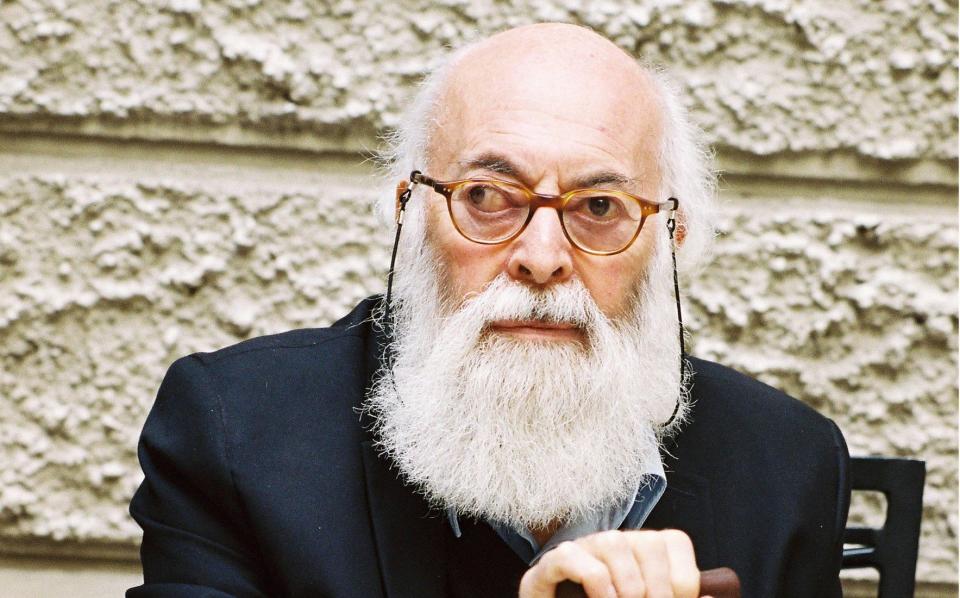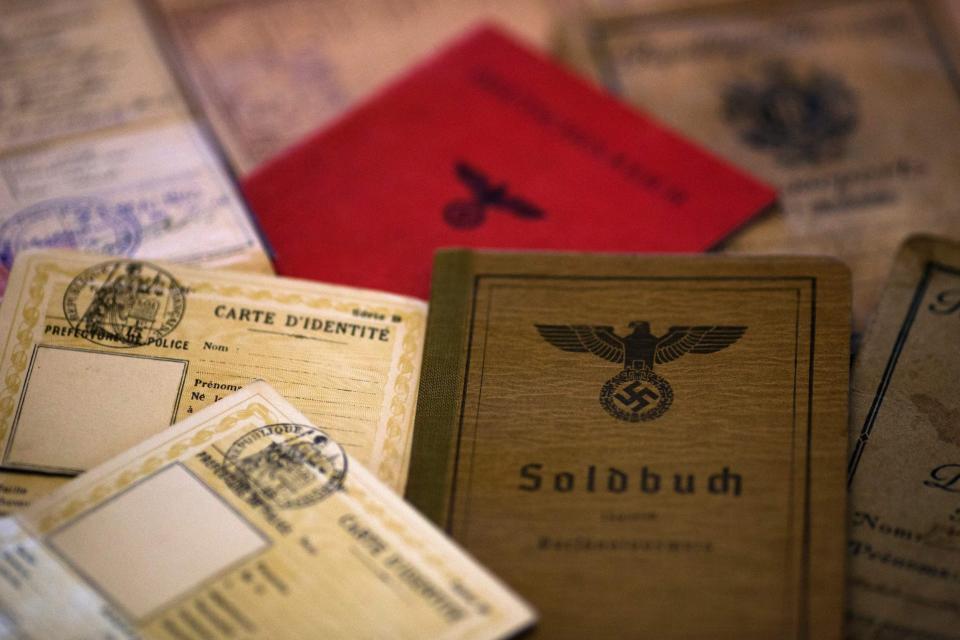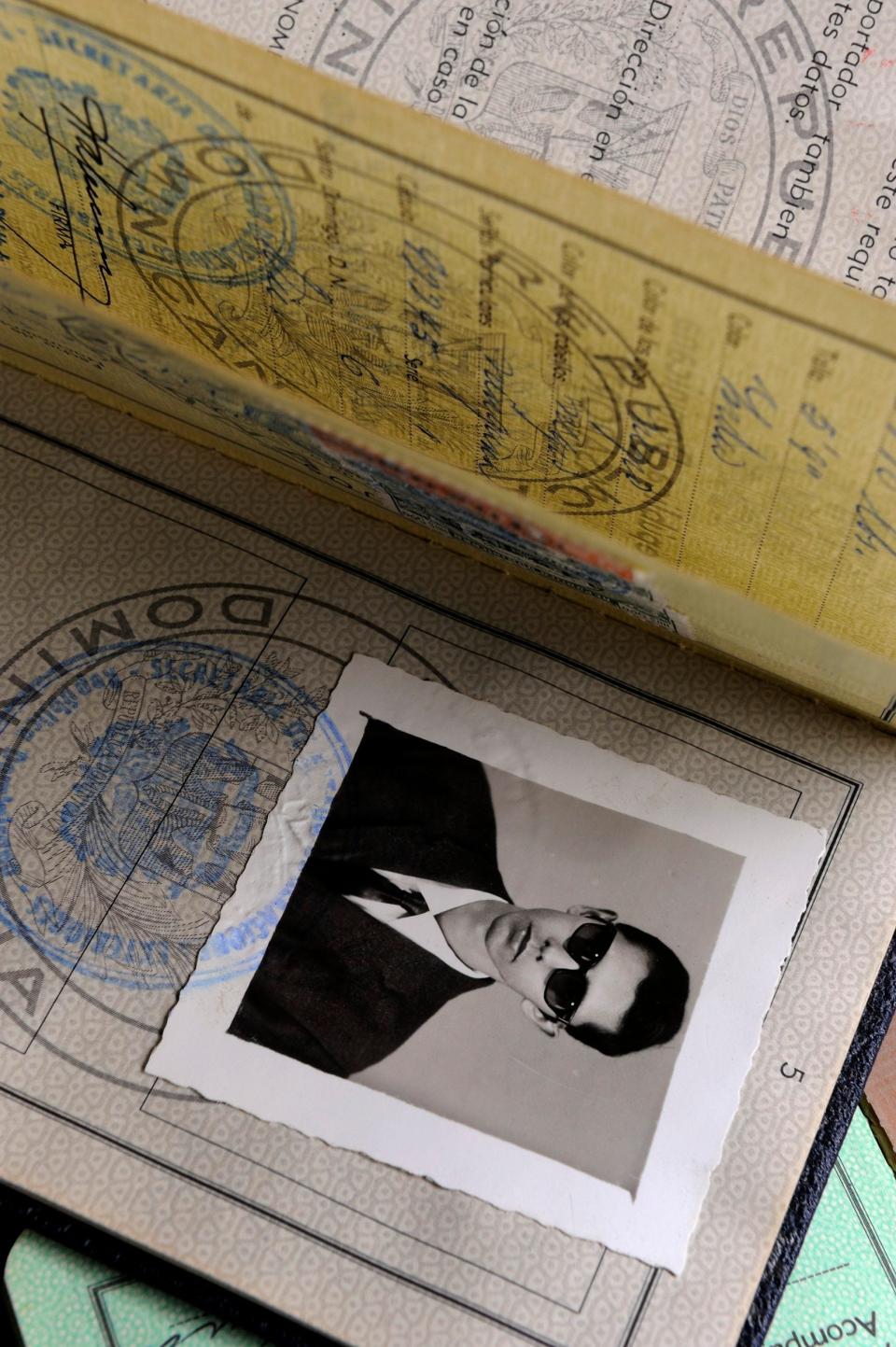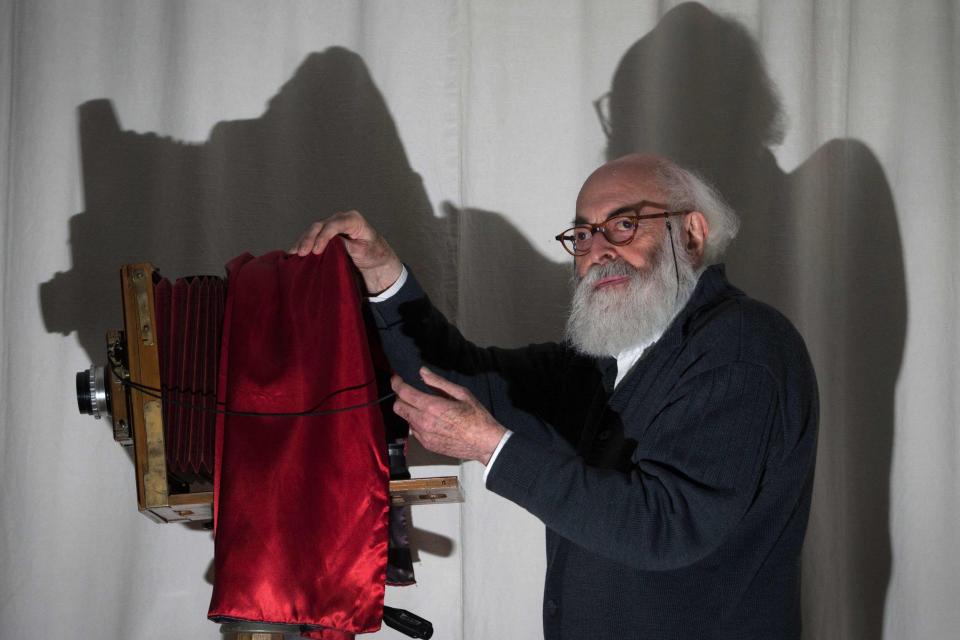Adolfo Kaminsky, resistance worker whose forged ID papers spared thousands of Jews from Nazi death camps – obituary

Adolfo Kaminsky, who has died aged 97, was a forger of documents who, particularly during the Second World War, operating from an underground laboratory at 17 Rue des St Pères, Paris, made identity papers for Jews and others fleeing from the Nazis.
He was a member of the French Resistance, responsible for the chemical forgery lab. Hard-working, he used to say: “Keep awake. Struggle against sleep. The calculation is easy. In one hour, I make 30 false papers. If I sleep one hour, 30 people will die.”
Kaminsky was a highly skilled draughtsman, creating passports from scratch, forging official typefaces and replicating watermarks and aged paper. But it was stressful work. “The smallest error and you send someone to prison or death,” he once said. “It’s a great responsibility. It’s heavy. It’s not at all a pleasure.”

Through the war, Kaminsky became the central figure in a vast network providing false identity papers to some 14,000 Jewish men, women and children in Nazi-occupied Paris.
When Paris was liberated in August 1944 he joined the French Army and was sent to Germany to help the French military secret services counterfeit documents for intelligence agents sent into occupied territory.
He was born into a Jewish family in Buenos Aires on October 1 1925, one of four children of Salomon Kaminsky, originally from Russia, and Anna, née Kinoël, from Georgia.
In 1932, the family emigrated to Paris, but six years later moved again, this time to the town of Vire in Calvados, where his uncle lived, and young Adolfo was apprenticed to a clothes dyer. He spent hours figuring out how to remove stains, then read chemistry textbooks and did experiments at home. “My boss was a chemical engineer, and would answer all of my questions,” he recalled.
In exchange for butter, he took a weekend job as a chemist’s assistant at a dairy where, to measure the fat content of cream, the chemist would add methylene blue to a sample and wait for the lactic acid to dissolve the colour. In this way Adolfo learnt that lactic acid could erase Waterman Blue, the supposedly indelible ink used on ID and ration cards.
In December 1940, Adolfo’s mother died in mysterious circumstances, falling from the Paris-Granville train. Aged 17, he joined the Resistance, first as a watcher at the railway station in Vire, from where trains of the Todt Organisation (the engineering group named after its Nazi founder, Fritz Todt) loaded raw material.
It was destined for building the Atlantic Wall, an extensive system of coastal defence constructed by Germany along the coast of continental Europe and Scandinavia as a defence against an anticipated Allied invasion. Kaminsky’s mission was to keep an eye on the rail station and dispatch reports to someone in London with details about the Todt’s trains and their cargo.

On October 22 1943, Solomon Kaminsky and his children were interned in Drancy, a staging camp for the death camps further east. They were freed thanks to Solomon’s Argentinian nationality, but had to stay at Drancy for three months.
The experience of his time there haunted Kaminsky for the rest of his life. He remembered a maths professor who had agreed to tutor him in the camp: “One day, when it was time for our classes, he wasn’t there. He hadn’t wanted to tell me beforehand that his name was on the list.”
An idealist from a young age, young Adolfo wanted to stay in the camp out of solidarity with the others who were slated for transport. But, as he recalled: “My father said: ‘No, there are more important things you can do on the outside.’ He had no idea what my job would be within a few weeks.”
On December 22 1943, the family returned to Paris. Fearing that it was only a matter of time before they were rearrested, Adolfo was sent to secure documents from a Jewish resistance group that would disguise the fact that they were Jews. When he was told that the group was having difficulty erasing blue ink from official documents, he told them to use lactic acid. It worked, and he was invited to join the group – though not before they had interrogated him rigorously for loyalty.
To assess his skills as a forger, Kaminsky was instructed to make an ID card for himself. “All I had to do,” he recalled, “was to copy all the fields meticulously… But I was very tense, I don’t know why. I will never forget the dim room, the smell of the wooden table that was lit by a small lamp, the pen and the inkwell.”
In a resistance cell based in an artist’s garret on the Left Bank, Kaminsky and his group would get tip-offs about planned arrests, then warn the families and forge papers for them. His cell focused on the most urgent cases, including children about to be sent to Drancy; they could be smuggled to rural homes or convents, or into Switzerland or Spain. Once, he was asked to produce birth certificates and ration cards for 300 Jewish children who were about to be rounded up: with only three days to complete the task, he worked without sleep for two days.
He covered his tracks by working, under the name Julien Keller, as a photographer, which explained his need to buy chemicals. In parallel, he worked for the Jewish resistance, La Sixième (the clandestine branch of the Les Eclaireurs Israélites de France) and the Organisation juive de combat, operating their chemical forgery lab.
After the war, in December 1946, which was the beginning of the First Indochina War, in which French troops fought against the Viet Minh, he resigned from the French military, unwilling to collaborate with what he regarded as a colonial war.
From 1946 to 1948 Kaminsky forged identity papers for the Haganah, the Jewish underground militia in British Mandated Palestine, to facilitate clandestine Jewish emigration to Palestine in defiance of British immigration laws, restricting the number of Jews allowed in.
But when, on May 14 1948, the state of Israel was declared, Kaminsky declined to join friends who were emigrating there, as he would not live in a state that chose, as he put it, “religion and individualism, because that represented everything I hate”. He wanted Israel to be “a communal, collectivist and … secular state”, believing that this would “cement peaceful co-existence”.
Instead Kaminsky stayed put in Paris. “To overcome loneliness,” he recalled, “I plunged body and soul into photography. Every night, I would climb on to Paris rooftops to catch the city in slumber.” He specialised in large-scale prints, postcards, reproductions of artworks and advertising photos, and did photo-reportage on coal mines and sugar refineries.
These activities, however, served as a cover, as Kaminsky – known as “the technician” – continued to forge papers for groups including the National Liberation Front of Algeria (FLN), which fought for independence in Algeria. In 1962, he counterfeited money for the FLN, the idea being to flood France with false 100-franc notes, to destabilise the French currency and economy and pressurise the government to withdraw its troops from Algeria.
“Counterfeiting money is not harder or less hard than forging other documents,” Kaminsky explained in an interview. “The difficulty lies in the fact that you have to create large quantities. One ID card means one person, and 10 ID cards mean 10 people. But when it comes to money you need millions, otherwise it’s worthless. After all, you don’t counterfeit notes to buy eggs at the grocery store.”
In March 1962, however, before the fake notes got into circulation, the government of Charles de Gaulle signed the Evian Accords, ending the war and giving Algeria its independence. When the ceasefire was declared, the notes were burnt in a huge bonfire.
He continued to assist various dissident and revolutionary movements in Latin America, Africa, Portugal (then under Salazar’s dictatorship) and Francoist Spain, and he made false ID papers for American draft dodgers during the Vietnam War. Always driven by principles, he took no payment for his work. “Most forgers do it for money,” he once said. “I did it so that others could survive. Call me a humanist forger.”

In 1971, Kaminsky stopped forging documents, convinced that too many different groups and people knew his identity, and that he would soon be caught and imprisoned; afterwards, he devoted his time to practising and teaching photography. He moved to Algeria, where he stayed for 10 years, returning to France in 1982.
Adolfo Kaminsky was awarded the Croix du Combattant, Croix du combatant volontaire de la Resistance, and the Médaille de Vermeil de la ville de Paris for his activities during the resistance to the German occupation.
In 2019-20, an exhibition opened at the Musée d’Art et d’Histoire du Judaïsme in Paris titled, Adolfo Kaminsky: Forger and Photographer, whose purpose was “to pay tribute to a figure of the Resistance whose remarkable photography has been largely ignored due to his illegal activities and partly clandestine existence”.
A small man with a long white beard, Kaminsky lived in a modest apartment for people with low incomes, not far from his former laboratory in Paris. The wartime work put such a strain on his vision that he eventually went blind in one eye.
He suffered from survivor’s guilt, remembering the people he had been unable to save, like Madame Drawda, a widow with four children whose Jewish family had been French for generations and who rejected his offer of forged papers. Kaminsky never saw her again.
In 1974 he married Leila Bendjebour, the daughter of a liberal Algerian imam. She survives him with their two sons and a daughter, and a daughter from an earlier marriage. A son from that marriage predeceased him.
Adolfo Kaminsky, born October 1 1925, died January 9 2023

 Yahoo News
Yahoo News 